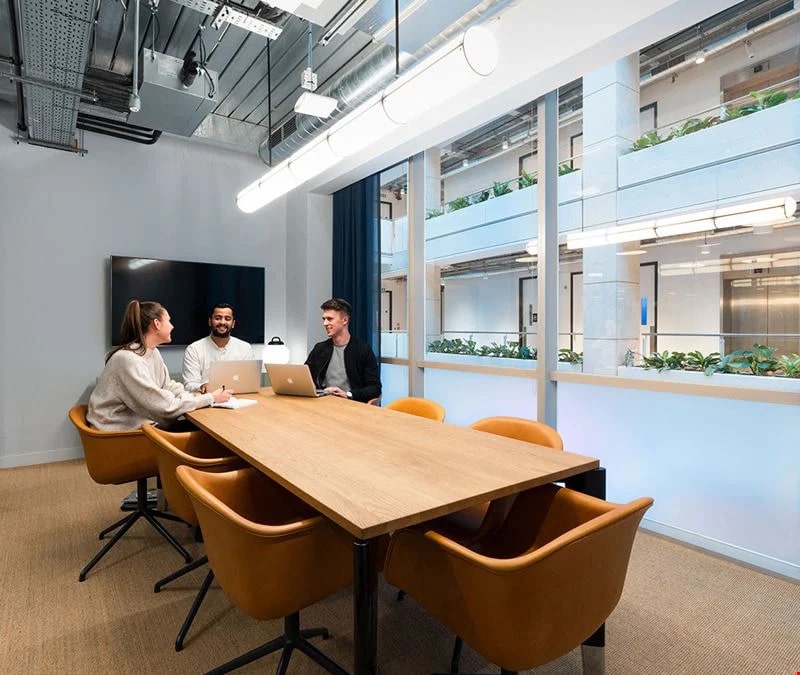As many of us enter another lockdown, optimism is easy to misplace but, for the disabled workforce, this could result in monumental change for future employment. On the week commencing the 25th anniversary of the Disability Discrimination Act and the run-up to International Day of Disabled Persons, could this be the final push for change?
As we swing in and out of remote-working, whether you love it or loathe it, one thing is abundantly clear - it can be done. Something that the 2 billion people currently living with disabilities have always known. Life can be accessible anywhere if you put your mind to it.
From the closure of gyms, hydrotherapy centres, community gatherings and other services, to the 2.2 million ‘high risk’ UK residents restricted to their homes, and the 60% who are struggling to obtain essentials such as medication and breathing equipment, it is without a doubt that the disabled community has been one of the worst affected by the global pandemic. However, with museum tours, theatre productions and your entire network now available at the click of a button, there are aspects of lockdown that have made life a thousand times better for those already housebound.
Over 19% of the UK & US workforce are disabled, that’s 34 million people in total, and yet very few companies target this pool of talent. One exception to this is BT who recently modernised several regional hubs with wellbeing and accessibility integrated into the design, including large, easy to navigate open-plan space, varying workstation sizes, mindful breakout space, all based in accessible regional locations.
Unlike BT, many businesses fall short of the demand for accessible workspace simply because they are unaware of the disabled experience. So, what exactly are these obstacles?
- Public transport: Commuting can be arduous for most workers, but for those with disabilities commuting can become impossible. With full accessibility only available in 50 out of 270 tube stations in London, 120 out of 472 subway stations in New York and 1 metro line in Paris, major cities are not designed for a disabled workforce.
- Parking spaces: Disabled parking spaces are often limited to one or two spaces, and many locations still result in a significant walk to the main office. One disabled worker living in Texas noted ‘if there is ever construction work or a large delivery, disabled parking spaces are the first to be blocked off’
- Accessibility: The Equality Act of 2010 states that a company must make ‘reasonable adjustments.’ for disabled staff members, but these adjustments can often lead to backdoor solutions that are demoralising and divisive, exacerbating the sense of otherness in those who need to use them. The issues with the Act are heavily debated, and more information is available here.
- Exhaustion: Many workers with disabilities can become physically exhausted by the process of commuting and moving around the office, and / or mentally exhausted by the demanding social culture. Once more, certain disabilities can be improved with regular wellness or exercise routines, however, these are difficult to fit into the traditional working day and workers are often too tired to maintain these in the evening.
- Privacy: For most people, sharing their personal life at work is a choice; where a person without disabilities can choose to disclose as much or as little information to their colleagues as they like, people with disabilities rarely have this luxury. Although we live in a world that champions pride in disability, some continue to struggle with self-confidence. So, whether asking for workspace adjustments or attending regular medical appointments, feelings of being a nuisance are still rife in the disabled community.
Many of these benefits reflect wider societal issues, but businesses can make small (or big) changes that will make a huge difference. But what exactly are these?
Between April & June of 2019, 14.1% of disabled workers were home-based (as opposed to 12.8% of non-disabled workers), and this jumped to 16.6% during the same period in 2020 (similarly, non-disabled workers increased to 16.3%). However, there are still over 3.4 million disabled workers who are not home-based, so is permanent homeworking the solution or not? For many people, homeworking can intensify feelings of isolation and estrangement. What’s more, regardless of your ability, collaboration is vital for creativity and innovation. The solution is choice. Many businesses have begun to consider an agile workplace which provides the ability to adapt quickly and easily to global changes, however, this new strategy will also give the disabled workforce freedom of choice. What would this include?
- Innovative workspace: Modern, collaborative workspaces that go beyond ‘reasonable adjustments’ by factoring in wellbeing, accessibility and beautiful designs. The image in the header of Robson Square is the perfect example of seamlessly integrated and simply stunning accessibility, proving that accessibility does not have to be an ugly, last-minute adjustment. An accessible workspace should provide a central creative hub for team gatherings, that also includes technology which is inclusive of remote workers. All Work and Social, a flexible office operator, went above and beyond to provide accessibility to all 6 floors of their property, Bonded Warehouse, despite the challenges that come with an industrial Grade II listed building.
- Choice of environment: A company structure that gives disabled workers the option to choose whether they work from home, the main office, or even a suburban hub. This can help prevent excessive exhaustion, reduce commuting time, and maintain the individual’s privacy, which ultimately benefits staff wellbeing and overall performance. Some businesses are adopting a ‘Hub and Spoke’ solution, which provides staff with the option to work from a location of their choice using membership apps.
- Smart working: a company culture that embraces smart working allows employees to optimise their time and abilities. Smart working allows disabled workers to integrate fitness and wellbeing activities into their workday, better manage their energy around client/collaboration time, travel to work at a time or day that is less congested, and takes the pressure off getting to a location by a specific deadline. At Refinery E9, a serviced office space by Working From, everything is a collective, their goal is to make every member feel the same, wellbeing is in everything that they do, both physically and mentally, including a wellness room that carries out three classes per day, day beds, healthy food, duvet days, and integrated accessibility, to name a few.
Ultimately, the pandemic has forced us to make work accessible everywhere, but now business leaders have the choice to make it permanent. In both the UK and US, adults with disabilities are twice as likely to be unemployed, but could this new normal finally level the playing field? With the global shift to agile working, we are likely to see an uprise of job opportunities for disabled workers, as the obstacles of workspace location, company culture and self-worth are dismantled. And with an agile workplace strategy in place, all businesses can benefit from improved employee wellbeing, agility, and innovation.



